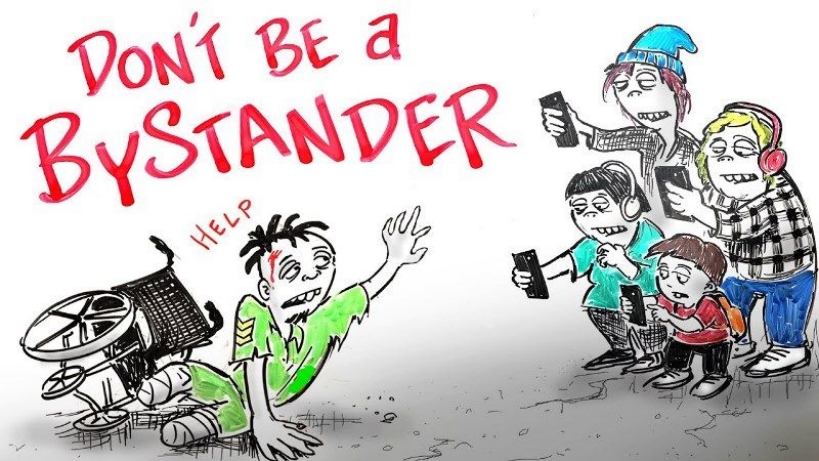The Bystander Effect: A Closer Look at Our Response to Others in Need

In the vibrant streets of Trinidad and Tobago, where the rhythm of soca music meets the bustling markets and serene beaches, a silent observer lurks within our communities: the Bystander Effect. As a professional deeply immersed in the nuances of social psychology within our twin-island state, I have witnessed how this global phenomenon uniquely manifests in our local context, impacting our responses to those in need around us.
The Bystander Effect, a term that might seem distant or academic, is actually a part of our daily lives. It describes how individuals are less likely to offer help to a person in distress when other people are present. This phenomenon is not just observed in large, impersonal cities abroad but is very much at play in our close-knit communities. Despite our reputation for warmth and hospitality, we too can fall prey to the diffusion of responsibility, where the presence of others leads us to believe that someone else will step in to help.
The Local Context
Imagine a scenario during one of our lively Carnival events, a common and beloved aspect of our cultural celebrations. The air is filled with the sound of steel pans, soca music, and the laughter and chatter of friends and families enjoying the festivities. Amidst this joyful celebration, a distressing situation unfolds at the edge of the crowd: an individual is suddenly and aggressively attacked by another party goer.
As the altercation escalates, it catches the attention of several bystanders. Yet, despite the severity of the situation, there’s a momentary pause, a collective hesitation. People glance at each other, waiting for someone to step in or to call for help. This hesitation is the Bystander Effect in action. The presence of a crowd creates a diffusion of responsibility, with each person thinking, “Surely, someone else will intervene.”
This moment of inaction can be critical. In a setting where everyone assumes someone else will act, the victim might not receive the immediate help they need. The assailant might feel empowered by the lack of intervention, potentially escalating the violence further.
This scenario is not unique to Trinidad and Tobago but is a stark reminder of the importance of overcoming the Bystander Effect. It underscores the need for us as a community to be vigilant and prepared to act decisively in moments of crisis, ensuring the safety and well-being of all participants in our vibrant celebrations.
The Harm it Causes
The repercussions of the Bystander Effect can resonate deeply, not just in emergencies but also in everyday situations of discomfort or injustice. It can dampen the spirit of our communities, creating spaces where people feel less safe and supported. When individuals in need are overlooked, it not only exacerbates their immediate distress but can also foster a sense of disconnection and alienation within the community. For bystanders, the regret and guilt that follow a missed opportunity to help can lead to a diminished sense of community pride and personal efficacy.
Breaking the Cycle
Addressing the Bystander Effect calls for a cultivation of awareness and empathy, traits that are already deeply woven into our cultural fabric. It starts with each of us recognizing that in moments of crisis, the collective inaction spurred by the assumption that “someone else will act” can be overcome by individual courage.
We can draw inspiration from our local heroes and everyday Samaritans who embody the spirit of community and action. From the neighbour who steps in to help in times of natural disasters to the stranger who offers a helping hand to a lost tourist, these acts of kindness are powerful antidotes to the Bystander Effect. They remind us that our actions, no matter how small, can make a significant difference.
Overcoming the Bystander Effect with Practical Steps
Relatable ways to counteract the Bystander Effect, especially tailored to fit into the vibrant culture and community life of Trinidad and Tobago:
· Social Media Campaigns: Use social media platforms to spread awareness about the Bystander Effect.
· First Aid and Conflict Resolution Workshops: Provide accessible first aid and conflict resolution workshops
· Empower with Knowledge: Make emergency numbers and resources widely available and easy to remember.
· Cultural Inclusion: Incorporate messages of active bystandership and community care into cultural events and celebrations.
By implementing these practical and relatable suggestions, individuals can become empowered to act decisively and compassionately, reducing the impact of the Bystander Effect and fostering a culture of care and intervention within the vibrant community of Trinidad and Tobago.
Conclusion
The Bystander Effect challenges us to be more than mere observers in our vibrant, dynamic society. It invites us to become active participants in weaving a fabric of community that is not only colorful and diverse but also compassionate and cohesive. By recognizing this phenomenon and challenging ourselves to respond with empathy and action, we can ensure that our islands are not just known for their beauty and culture, but also for their spirit of community and care. Together, we can shift from inaction to action, making Trinidad and Tobago a beacon of hope and humanity.
Contribution by
Devi
